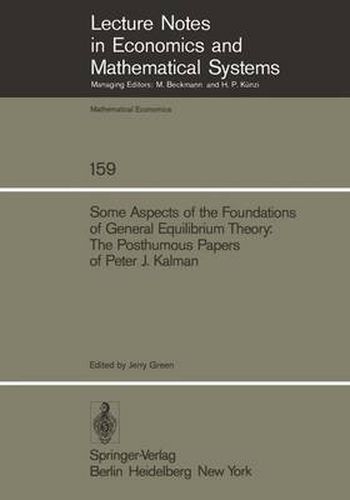Some Aspects of the Foundations of General Equilibrium Theory: The Posthumous Papers of Peter J. Kalman
P. J. Kalman

Some Aspects of the Foundations of General Equilibrium Theory: The Posthumous Papers of Peter J. Kalman
P. J. Kalman
This title is printed to order. This book may have been self-published. If so, we cannot guarantee the quality of the content. In the main most books will have gone through the editing process however some may not. We therefore suggest that you be aware of this before ordering this book. If in doubt check either the author or publisher’s details as we are unable to accept any returns unless they are faulty. Please contact us if you have any questions.
In a wide number of economic problems the equilibrium values of the variables can be regarded as solutions of a parametrized constrained maximization problem. This occurs in static as well as dynamic models; in the latter case the choice variables are often paths in certain function spaces and thus can be regarded as points in infinite dimensional spaces. It is sometimes possible to determine qualitative properties of the solutions with respect to changes in the parameters of the model. The study of such properties is often called comparative statics; [15], [2], and [10]. Certain comparative static properties of the maxima have proven to be of particular importance for economic theory, since the works of Slutsky, Hicks, and Samuelson [15]: they have been for- lated in terms of synunetry and negative semidefiniteness of a matrix, called the Slutsky-Hicks-Samuelson matrix. A discussion of this matrix and its applications is given in Section 1. The study of these properties in economic theory, however, has so far been restricted to static models where the choice variable and the parameters are elements in Euclidean spaces, and where there is only one constraint.
This item is not currently in-stock. It can be ordered online and is expected to ship in 7-14 days
Our stock data is updated periodically, and availability may change throughout the day for in-demand items. Please call the relevant shop for the most current stock information. Prices are subject to change without notice.
Sign in or become a Readings Member to add this title to a wishlist.


